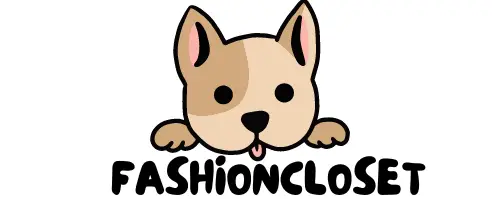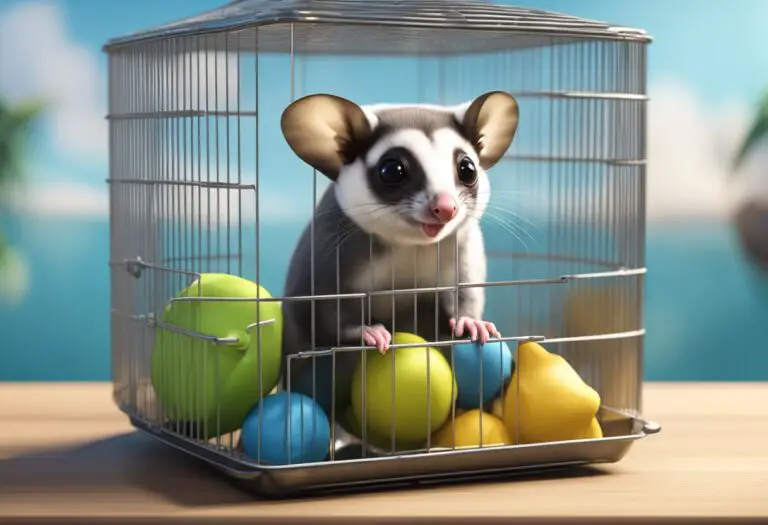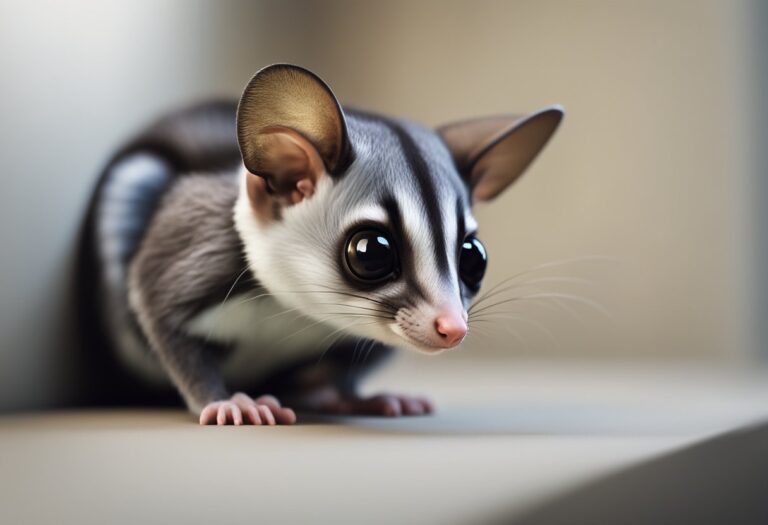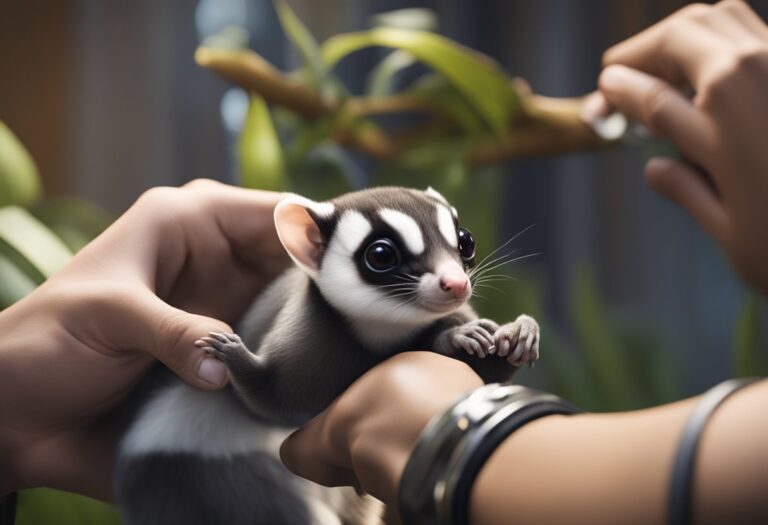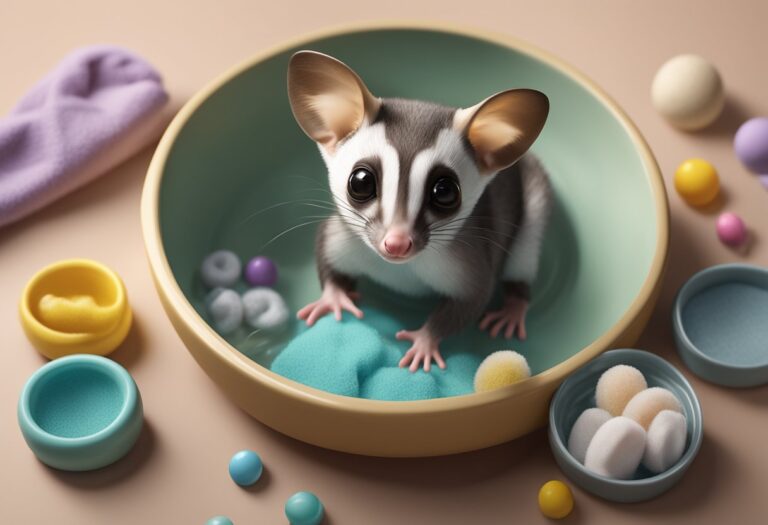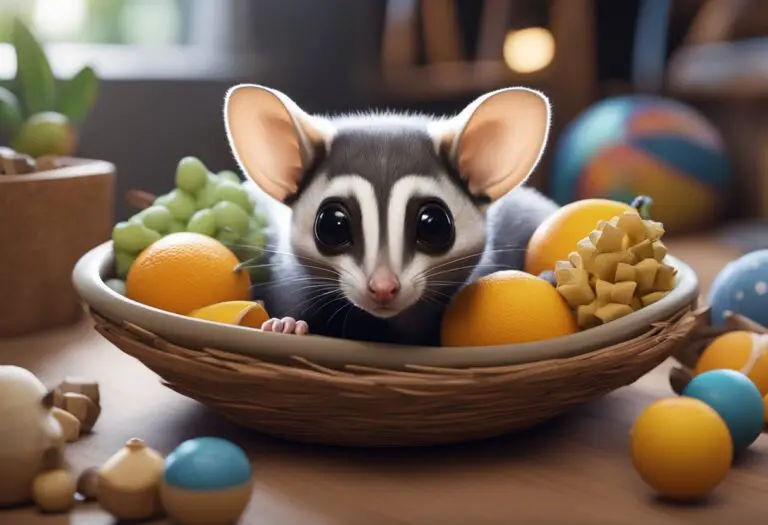Sugar Glider Daily Care Routine: A Comprehensive Guide
Did you know that sugar gliders can leap up to 200 feet in a single glide? These captivating marsupials require specialized care and attention to thrive as beloved companion animals. This comprehensive guide provides a detailed overview of the essential elements of a sugar glider’s daily care routine, covering key aspects such as their specialized dietary needs, proper cage setup, exercise and enrichment activities, grooming, bonding, and health monitoring.
By following these guidelines, readers can ensure their sugar glider receives the attentive care and attention it requires to live a happy and healthy life. The article aims to educate new and experienced sugar glider owners on the best practices for maintaining the overall well-being of these unique and fascinating creatures.
Understanding the Unique Needs of Sugar Gliders
Sugar gliders, with their distinctive features and captivating personalities, have gained popularity as unique companion animals. However, their specialized care requirements set them apart from more common household pets. To provide sugar gliders with a healthy and enriching environment, it is essential to understand their unique needs and the factors that contribute to their specialized care.
What Are Sugar Gliders?
Sugar gliders are small, nocturnal marsupials native to Australia, Indonesia, and nearby regions. These agile, gliding creatures are known for their ability to gracefully soar through the air, using a membrane of skin that stretches between their limbs. Their name is derived from their fondness for sweet nectar and their gliding abilities, which allow them to traverse large distances with ease.
Why Do Sugar Gliders Require Specialized Care?

Sugar gliders have a complex set of dietary requirements, social needs, and environmental preferences that necessitate a specialized approach to their care. Their unique characteristics, such as their small size, high-energy lifestyle, and social nature, require owners to provide a carefully curated living space, a balanced diet, and ample opportunities for physical and mental stimulation. Neglecting these specialized care requirements can lead to various health and behavioral issues, compromising the overall well-being of these delicate creatures.
By understanding the unique needs of sugar gliders and the importance of meeting their specialized care requirements, readers can ensure that these fascinating companions receive the attention and resources they need to thrive in a captive environment.
Sugar Glider Diet: A Balanced Approach
Providing a well-rounded, nutritious diet is essential for the overall health and well-being of sugar gliders. As omnivorous marsupials, these unique creatures require a delicate balance of proteins, carbohydrates, vitamins, and minerals to thrive.
Essential Nutrients for Sugar Gliders
Sugar gliders have specific nutritional needs that must be met to ensure their optimal development and longevity. Their diet should consist of a variety of high-quality protein sources, such as cooked lean meats, eggs, and insects. Carbohydrates, in the form of fresh fruits and vegetables, should make up a significant portion of their daily intake to provide essential energy and fiber.
In addition to the macronutrients, sugar gliders also require a range of vitamins and minerals to support their immune system, bone health, and overall bodily functions. Calcium, phosphorus, and vitamin D are particularly important for maintaining strong bones and teeth.
Preparing a Varied and Nutritious Diet
Crafting a well-balanced sugar glider diet requires careful planning and preparation. Owners should strive to provide a diverse array of high-quality, natural food items that mimic the sugar glider’s natural foraging habits in the wild.
This may include a combination of commercial sugar glider pellets, fresh fruits and vegetables, cooked lean proteins, and supplementary items like nuts, seeds, and calcium-rich foods. Maintaining the appropriate ratios of these sugar glider nutrition elements is crucial for ensuring their food preparation meets their unique dietary requirements.
By understanding the essential nutrients and providing a varied, balanced sugar glider diet, owners can help ensure their furry companions receive the nourishment they need to thrive and live their best lives.
Creating a Comfortable Cage Setup
When it comes to providing a sugar glider with a suitable living environment, the sugar glider cage setup is of utmost importance. The size and materials used in the sugar glider cage can significantly impact the overall comfort and well-being of these unique companion animals.
Choosing the Right Cage Size and Materials
Selecting the appropriate sugar glider cage size is crucial, as sugar gliders require ample space to move, explore, and exercise. Experts recommend a minimum cage size of 24 inches wide, 24 inches deep, and 36 inches tall, with horizontal bar spacing of no more than 1 inch. The sugar glider cage should be constructed using sturdy, non-toxic materials, such as powder-coated wire or stainless steel, to ensure the safety and security of your sugar glider.
Providing Appropriate Nesting and Sleeping Areas
In addition to the sugar glider cage size and materials, it is essential to create designated sugar glider nesting areas within the enclosure. These areas should include soft, comfortable substrates like shredded paper, fleece, or aspen bedding, as well as various hiding spots and cozy pouches for the sugar gliders to nest and sleep in. Providing multiple nesting options allows your sugar glider to choose their preferred resting place and feel secure in their environment.
Sugar Glider Daily Care Routine
Establishing a consistent daily care routine is essential for ensuring the overall well-being of sugar gliders. This section delves into the specifics of both the morning and evening activities that should be incorporated into a sugar glider owner’s schedule.
Morning Routine: Feeding and Cage Maintenance
The morning routine for a sugar glider’s care begins with providing a balanced and nutritious sugar glider feeding. This involves preparing a varied diet of commercial pellets, fresh fruits and vegetables, and other supplementary items that meet their unique dietary needs. After feeding, it’s crucial to thoroughly inspect and maintain the sugar glider’s cage, ensuring the substrate, furnishings, and enrichment items are clean and in good condition.
Evening Routine: Playtime and Bonding
As the day winds down, the focus shifts to providing ample sugar glider playtime and bonding opportunities. Sugar gliders are highly social animals and thrive on human interaction, so dedicating time each evening to supervised playtime and bonding exercises is essential. This could involve engaging them in interactive toys, exploring a safe, enclosed area outside their cage, or simply spending quality time with their owner to strengthen the sugar glider bonding process.
By establishing and consistently following a daily care routine that addresses the sugar glider’s dietary, environmental, and social needs, owners can help ensure their furry companions remain healthy, active, and content.
Exercise and Enrichment Activities
Providing adequate exercise and enrichment opportunities is crucial for the overall health and well-being of sugar gliders. These captivating creatures are naturally active and curious, requiring a stimulating environment that caters to their physical and mental needs.
Importance of Physical Activity for Sugar Gliders
Regular sugar glider exercise not only keeps them physically fit but also helps prevent boredom and destructive behaviors. Sugar gliders are agile and adept climbers, and they thrive on opportunities to explore, leap, and glide. Ensuring they have ample space to engage in these natural behaviors is essential for maintaining their overall well-being.
In addition to physical exercise, sugar glider enrichment activities are crucial for stimulating their inquisitive minds and encouraging natural foraging behaviors. Depriving sugar gliders of appropriate physical activity and enrichment can lead to stress, anxiety, and even health issues.
Creative Ideas for Toys and Enrichment
To provide engaging sugar glider toys and enrichment activities, consider incorporating a variety of items that cater to their diverse needs. Offer sturdy, safe climbing structures, such as branches, ladders, and ropes, to encourage their natural instinct to explore. Rotating different types of toys and enrichment items can help prevent boredom and stimulate their curious minds.
Some popular sugar glider enrichment ideas include:
- Foraging boxes filled with treats or shredded paper
- Puzzle feeders that challenge them to work for their food
- Tunnels, mazes, and hiding spots to encourage natural exploration
- Hanging platforms or swings for gliding and jumping
- Rotating novel objects, such as cardboard tubes or paper bags, to investigate
By incorporating a diverse range of sugar glider exercise opportunities and enrichment activities into their daily routine, you can help ensure your sugar gliders remain physically and mentally stimulated, leading to a happier and healthier lifestyle.
Grooming and Hygiene Practices
Maintaining proper sugar glider grooming and hygiene is essential for their overall health and well-being. This includes regular sugar glider nail trimming, fur brushing, and bathing to keep their sugar glider fur care in top condition.
Nail trimming should be done every 4-6 weeks to prevent overgrowth and ensure the sugar glider’s nails remain at a comfortable length. Use small, sharp pet nail clippers and be careful not to cut the quick, which can be painful and lead to bleeding. It’s best to have a veterinarian or experienced owner demonstrate the proper technique before attempting this task at home.
Brushing the sugar glider’s fur is a great way to bond with your pet and keep their sugar glider hygiene in check. Use a soft-bristled brush and gently work through any tangles or mats, being mindful not to pull or tug on the delicate fur. This grooming activity can be a pleasant experience for the sugar glider if introduced gradually and paired with positive reinforcement.
Periodic bathing may also be necessary to remove any dirt, debris, or odors from the sugar glider’s sugar glider grooming routine. Use a mild, pet-safe shampoo and lukewarm water, being careful not to get water in the ears or eyes. Gently pat the sugar glider dry with a soft towel and provide a warm, cozy environment until they are completely dry.
In addition to personal grooming, maintaining a clean and sanitary living environment is crucial for the sugar glider’s overall health. Regularly disinfect the cage, toys, and bedding materials to prevent the buildup of harmful bacteria and odors. By staying on top of these sugar glider hygiene practices, you can help ensure your sugar glider remains happy, healthy, and well-groomed.
Recognizing Signs of Illness
As responsible sugar glider owners, it’s crucial to be vigilant in monitoring the health and well-being of these delicate creatures. Sugar glider health issues can manifest in various ways, and being able to recognize the early warning signs of sugar glider illness symptoms can make all the difference in providing timely and effective care.
Common Health Issues in Sugar Gliders
Some of the most common health problems that can affect sugar gliders include respiratory infections, dental issues, metabolic disorders, and skin conditions. Respiratory infections, for instance, may present with symptoms such as wheezing, labored breathing, or nasal discharge. Dental problems, on the other hand, may be indicated by excessive drooling, difficulty eating, or overgrowth of the teeth.
Metabolic disorders, such as obesity or hypoglycemia, can lead to lethargy, loss of appetite, and other concerning signs. Skin conditions, like fungal infections or mites, may cause hair loss, irritation, or discoloration of the fur. Staying attuned to any changes in your sugar glider’s behavior, appearance, or eating habits can help you identify potential health issues early on.
When to Seek Veterinary Attention
If you notice any concerning symptoms or changes in your sugar glider’s health, it is essential to seek sugar glider veterinary care without delay. Exotic animal veterinarians who specialize in the care of sugar gliders are best equipped to diagnose and treat any underlying conditions, as they have the necessary expertise and resources to provide comprehensive medical support.
Some signs that warrant an immediate veterinary visit include lethargy, loss of appetite, significant weight changes, discharge from the eyes or nose, and any signs of distress or pain. By addressing sugar glider health issues promptly, you can help ensure the long-term well-being and quality of life for your beloved companion.
Bonding and Socialization
As highly social creatures, sugar gliders thrive on human interaction and the companionship of their own kind. Establishing a strong bond with your sugar glider and facilitating positive socialization experiences are crucial for their overall well-being and happiness. By understanding the importance of bonding and socialization, you can create a rewarding and enriching relationship with your furry friend.
Introducing New Sugar Gliders to Your Colony
When adding a new sugar glider to an existing colony, it’s essential to introduce them gradually and with great care. This process helps ensure a smooth transition and minimizes the risk of stress or conflict. Begin by allowing the new sugar glider to become accustomed to the sights, sounds, and scents of the colony’s environment. Slowly introduce the new glider to the other members, using positive reinforcement techniques to encourage friendly interactions and acceptance.
It’s important to provide ample time and space for the sugar gliders to establish their own social hierarchy and bonds. Rushing the process or forcing interactions can lead to tension and even aggressive behavior. patience and a gentle approach are key to a successful colony introduction.
Building Trust and Positive Reinforcement
Fostering a strong bond between you and your sugar glider requires time, patience, and the use of positive reinforcement techniques. Sugar glider bonding is a gradual process that involves earning the trust and confidence of your pet through consistent, gentle interactions. Offer your sugar glider treats, gently stroke their fur, and engage them in play to help them associate you with positive experiences.
Positive reinforcement, such as rewarding desired behaviors with treats or praise, is an effective way to encourage sugar glider socialization and strengthen the bond between you and your pet. This approach helps create a trusting and mutually beneficial relationship, where your sugar glider learns to see you as a source of comfort, security, and enjoyment.
By prioritizing sugar glider colony introduction and using positive reinforcement techniques, you can foster a strong and rewarding relationship with your sugar glider, ensuring they feel safe, loved, and able to thrive in your care.
Conclusion
As this comprehensive guide has highlighted, providing a sugar glider with the proper daily care routine is essential for their overall health and well-being. From a balanced and nutritious diet to an appropriate living environment, ample exercise and enrichment, and attentive grooming and health monitoring, sugar glider owners must be prepared to commit to the specialized care these unique companion animals require.
By following the tips and recommendations outlined in this article, readers can ensure their sugar glider’s daily routine is tailored to meet their specific needs. This includes providing a varied and nutrient-dense sugar glider care summary, creating a comfortable and stimulating cage setup, and engaging the glider in regular sugar glider daily routine tips and bonding activities.
Ultimately, successful sugar glider ownership requires a deep understanding of the sugar glider ownership responsibilities and a willingness to prioritize the animal’s well-being above all else. Readers are encouraged to continue educating themselves, seeking guidance from experienced veterinarians and fellow sugar glider enthusiasts, and remaining vigilant in addressing any health or behavioral concerns that may arise. With the right care and commitment, these fascinating creatures can thrive and bring endless joy to their devoted owners.
